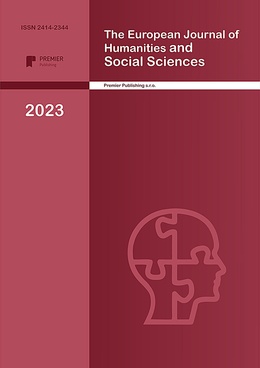Willingness to Communicate in Second Language Acquisition: A Review of Peter MacIntyre's Contributions to the Field
Authors
Aybolgan T. Borasheva

Share
Annotation
This paper discusses Peter MacIntyre's research on Willingness to Communicate (WTC) in second language acquisition. MacIntyre pioneered the study of WTC in L2 and developed an influential model outlining factors that shape an individual's readiness to communicate in a second language. His work highlighted the roles of psychological variables, social context and classroom environment in influencing WTC. While influential, MacIntyre's research has also received some criticism regarding reliability, validity and generalizability. Comparison with other WTC researchers reveals differences in focus and approach. MacIntyre's work has implications for future SLA research, language curriculum design, teacher training, and use of technology to promote WTC.
Keywords
Authors
Aybolgan T. Borasheva

Share
References:
- MacIntyre, P. D., Baker, S. C., Clément, R., & Donovan, L. A. (2003). Talking in order to learn: Willingness to communicate and intensive language programs. The Canadian Modern Language Review, 59(4), 589-607.
- MacIntyre, P. D., Clément, R., Dörnyei, Z., & Noels, K. A. (1998). Conceptualizing willingness to communicate in a L2: A situational model of L2 confidence and affiliation. The Modern Language Journal, 82(4), 545-562.
- Canadian Psychological Association (2015). Award for Distinguished Contributions to Education and Training in Psychology. Retrieved from [https://www.cpa.ca/aboutcpa/cpaawards/educationandtraining/ ↗](https://www.cpa.ca/aboutcpa/cpaawards/educationandtraining/)
- Clément, R., & MacIntyre, P. D. (1994). Willingness to Communicate in a Second Language: The Effects of Context, Norms, and Vitality. *Journal of Language and Social Psychology*, 13(2), 190–209.
- Derwing, T. M., Munro, M. J., & Thomson, R. I. (2008). A longitudinal study of ESL learners' fluency and comprehensibility development. Applied Linguistics, 29(3), 359-380.
- Kang, S. J. (2005). Dynamic emergence of situational willingness to communicate in a second language. System, 33, 277-292.
- MacIntyre, P. D. (1994). Variables underlying willingness to communicate: A causal analysis. Communication Research Reports, 11(2), 135-142.
- MacIntyre, P. D., & Charos, C. (1996). Personality, attitudes, and affect as predictors of second language communication. _Journal of Language and Social Psychology_, 15(1), 3-26.
- MacIntyre, P. D., & Gardner, R. C. (1994). The subtle effects of language anxiety on cognitive processing in the second language. _Language Learning_, 44(2), 283-305.
- MacIntyre, P. D., & Legatto, J. J. (2011). A dynamic system approach to willingness to communicate: Developing an idiodynamic method to capture rapidly changing affect. Applied Linguistics, 32(2), 149-171.
- MacIntyre, P. D., Babin, P. A., & Clément, R. (1999). Willingness to communicate: Antecedents & consequences. Communication Quarterly, 47(2), 215–229.
- MacIntyre, P. D., Babin, P. A., & Clément, R. (1999). Willingness to Communicate: Antecedents & Consequences. _Communication Quarterly_, 47(2), 215-229.
- MacIntyre, P. D., Baker, S. C., Clément, R., & Conrod, S. (2001). Willingness to communicate, social support, and language-learning orientations of immersion students. _Studies in Second Language Acquisition_, 23(3), 369-388.
- MacIntyre, P. D., Baker, S. C., Clément, R., & Donovan, L. A. (2002). Sex and age effects on willingness to communicate, anxiety, perceived competence, and L2 motivation among junior high school French immersion students. _Language Learning_, 52(3), 537-564.
- MacIntyre, P. D., Burns, C., & Jessome, A. (2011). Ambivalence about communicating in a second language: A qualitative study of French immersion students' willingness to communicate. _The Modern Language Journal_, 95(1), 81-96.
- MacIntyre, P. D., Clément, R., Dörnyei, Z., & Noels, K. A. (1998). Conceptualizing willingness to communicate in a L2: A situational model of L2 confidence and affiliation. _The Modern Language Journal_, 82(4), 545-562.
- Peng, J. E. (2007). Willingness to communicate in the Chinese EFL university classroom: An ecological perspective. Ph.D. thesis, University of Sydney.
- Peng, J. E., & Woodrow, L. (2010). Willingness to communicate in English: A model in the Chinese EFL classroom context. Language Learning, 60(4), 834-876.
- Yashima, T. (2002). Willingness to communicate in a second language: The Japanese EFL context. Modern Language Journal, 86, 54-66.


